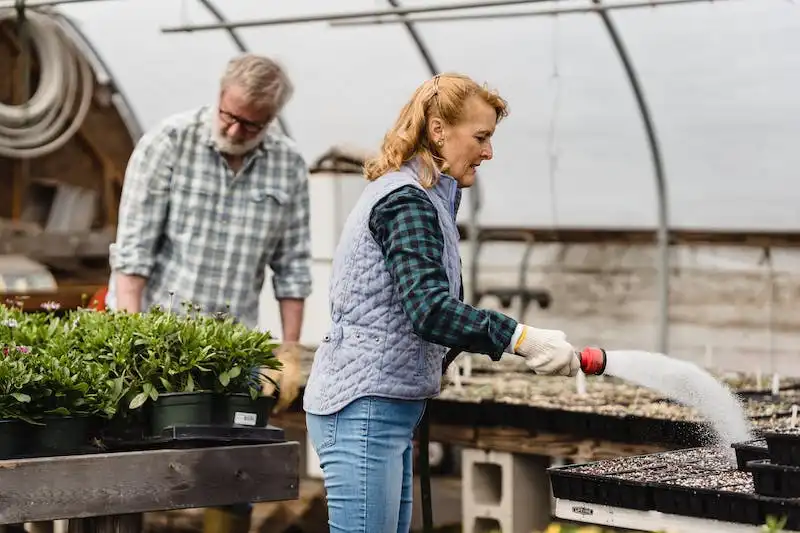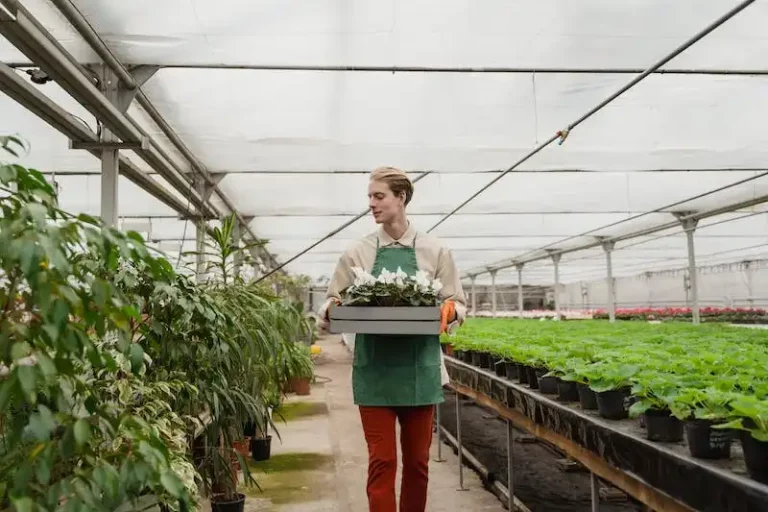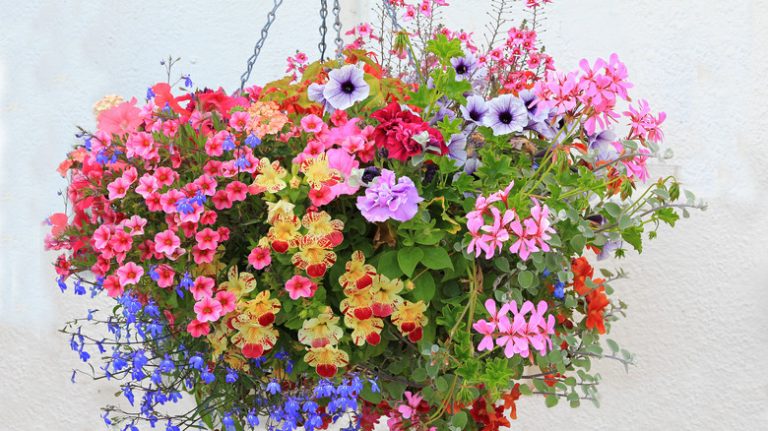As the summer months transition into autumn, gardeners are looking for ways to extend the beauty and productivity of their gardens. Late summer planting is a great way to resist the end-of-summer blues and welcome the cooler months ahead. In addition to vegetables that thrive in the fall, there are also a variety of flowers and other plants that can add color and life to your landscape.
One of the best late summer bloomers is the sedum family. These plants are known for their ability to survive in hot and dry conditions, making them perfect for the late summer months. They’re also a great choice for those who want low-key gardens, as they require little watering and maintenance.
If you’re looking for some inspiration for late summer planting, consider adding echinaceas to your garden. These beautiful flowers come in a wide range of colors, from bright yellows to deep purples. They’re also a favorite of butterflies, so they’ll help attract these pollinators to your garden.
Another great option for late summer planting is hibiscus. These plants cannot resist the call of the warm summer months and continue to bloom well into the fall. With their dark, rich colors, they make a stunning addition to any garden.
So, if you’re a gardener who wants to keep the beauty of summer alive in your landscape, late summer planting is a great option. With a variety of vegetables, flowers, and other plants available, you’re sure to find something to suit your taste and bring color to your garden. Whether you choose to plant vegetables for a late harvest or add some beautiful flowering plants for a splash of color, late summer planting is definitely worth considering.
Not sure how to plant these late summer beauties? Don’t worry, there are plenty of resources available to help you. Whether you’re a seasoned gardener or a beginner, there are gardening guides and articles that can provide step-by-step instructions on how to plant and care for these plants. So, go ahead and bring some late summer blooms into your garden and enjoy the beauty they bring to your home.
Here By Design
If you’re looking for plants that will keep your gardens looking beautiful throughout the late summer, consider incorporating some perennials into your planting scheme. Perennials are plants that come back year after year, and there are many species that can be planted in late summer to add color and interest to your gardens.
One popular perennial is Platycodon, also known as balloon flower. This species produces vibrant blue, pink, or white flowers with petals that open up like a balloon. Platycodon is a great choice for gardens because it is easy to grow and requires minimal watering.
If you’re more interested in vegetables and fruits, there are plenty of options for late summer planting as well. Daylilies, for example, are a common choice for gardens because they are hardy and produce beautiful blooms in a wide range of colors. Daylilies also attract pollinators like bees and butterflies to your garden, which can help boost your overall fruit production.
Another perennial that is perfect for late summer planting is Sedum. Sedum is a flowering plant that comes in a variety of colors and shapes. The flowers of Sedum are known for their broad, flat petals and are a welcome addition to any garden. Sedum is also drought-tolerant and can withstand hot, dry conditions.
If you’re unsure of what plants to choose for your own gardens, consider doing some research online or visiting a local garden center for ideas. There are many resources available that can help you determine which plants are best suited to your location and growing conditions.
No matter which plants you decide to incorporate into your gardens, be sure to provide them with the proper care and maintenance. This includes regular watering, fertilizing, and pruning as needed. It’s also important to consider the impact of rain on your gardens and whether you may need to provide additional irrigation or mulch to help them thrive.
With a little planning and consideration, you can have beautiful gardens that are carefully designed to thrive in the summer months. Whether you choose vibrant flowers or productive vegetables, there are plenty of options available to make your gardens truly stand out.
So, if you’re ready to start planning your late summer gardens, don’t hesitate to join the many gardeners who have discovered the benefits of incorporating perennials, fruits, and vegetables into their designs. By choosing plants that are well-suited to your location and growing conditions, you can create gardens that are beautiful and easy to maintain.
Ideas and inspiration for beautiful sustainable gardens
When it comes to designing a beautiful sustainable garden at home, there are endless possibilities. Whether you have a large backyard or just a small balcony, you can create a space that is not only visually appealing but also environmentally friendly. Here are some ideas and inspiration to get you started.
First and foremost, think about water conservation and irrigation. With the help of technology and tools like Google, you can easily find information on how to efficiently water your plants and reduce water waste. Installing a drip irrigation system or using a rain barrel can greatly conserve water and ensure that your plants stay hydrated.
When selecting plants for your garden, consider including native species that are adapted to your local climate. For instance, hibiscus and echinaceas are beautiful flowers that are known to be drought tolerant. You’d also want to choose plants that can withstand rain-impacted, post-flood conditions if you live in an area prone to heavy rainfall.
In addition to choosing the right plants, it’s important to create a garden design that is visually appealing. Think about the layout and the color scheme that you want to achieve. Daylilies, for example, are low-key plants that can add pops of color to any location. Their blooms come in various shades, from vibrant yellows to deep oranges, making them a perfect addition to any garden.
Proper care and maintenance are also key for a sustainable garden. Adding compost to your soil can help improve its fertility and nutrient content, allowing your plants to grow and thrive. Mulch is another great addition, as it helps retain moisture in the soil, reduces weed growth, and provides an extra layer of insulation against heat and cold.
When it comes to flowers, it’s worth considering perennials. These plants come back year after year, saving you time and effort in replanting. Roses, for example, can produce beautiful blooms almost overnight. Their fragrant and vibrant flowers are a feast for the eyes and can add a touch of elegance to any garden.
Finally, don’t forget about pruning and shaping your plants. Proper pruning not only helps keep your garden looking neat and tidy but also promotes healthy growth. Green and lush foliage is always a welcome sight in any garden.
In conclusion, creating a beautiful sustainable garden is not only beneficial for the environment but also for your own enjoyment. By choosing the right plants, implementing water-saving techniques, and practicing proper care, you can have a garden that is both stunning and eco-friendly.
The Best Late-Summer Flowers For A Beautiful Garden
Late summer is the perfect time to add some beautiful flowers to your garden. With the heat-resistant blooms and foliage, they can make a stunning addition to any landscape. Here are ten late-summer flowers that are worth planting:
1. Rose: Roses are classic and timeless flowers that bloom in a variety of colors. They are perfect for adding color and fragrance to your garden.
2. Sedum: Sedum is a super heat-resistant plant that produces beautiful blooms in late summer. It is also a favorite of pollinators, making it a great choice for attracting butterflies and bees to your garden.
3. Physostegia: Also known as the “obedient plant,” physostegia is a late-summer bloomer that adds a pop of color to your garden. Its flowers come in shades of pink, purple, and white.
4. Daylilies: Daylilies are low-maintenance perennials that bloom in late summer. They come in a wide range of colors and are perfect for adding texture to your garden.
5. Annabelle Hydrangea: The Annabelle hydrangea is a heat-resistant plant that produces large and beautiful white flower heads. They are perfect for adding a touch of elegance to your garden.
6. Balloon Flower: The balloon flower gets its name from its unique balloon-like buds that open up into beautiful blooms. They come in shades of blue, pink, and white.
7. Dark-leaf Dahlias: Dark-leaf dahlias have stunning foliage that adds a touch of drama to your garden. They produce beautiful flowers in a variety of colors.
8. Autumn Joy Sedum: The Autumn Joy sedum is a late-summer bloomer that boosts the color in your garden as the weather cools. Its flowers start off pink and then turn a deep rust color.
9. Allium: Allium is a family of plants that includes onions, chives, and more. They produce unique round flower heads in a variety of colors.
10. Coreopsis: Coreopsis is a heat-resistant plant that produces bright yellow flowers. It is perfect for attracting pollinators and adding a pop of color to your garden.
In addition to their beauty, these late-summer flowers are also sustainable. They can help attract beneficial pollinators to your garden, and some can even be used to make compost later. So why not join the many gardeners who have already discovered the benefits of planting these heat-resistant blooms in their gardens? Plant them now and enjoy their beauty for many years to come.




